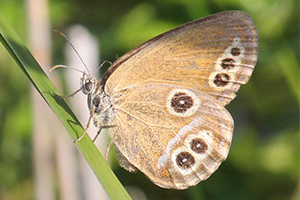On 27 January, Lisea, concession-holder of the South Europe Atlantic high-speed rail line, and Cosea, project manager, entrusted CDC Biodiversité with the implementation and monitoring of compensatory measures in favour of wetlands and the fadet des laîches butterfly until June 2061.
CDC Biodiversité's mission is thus to compensate for one of the effects of the high-speed line: disturbance to the wetland, the natural habitat of the fadet des laîches butterfly (Coenonympha oedippus). To do this, following on from the actions already undertaken at its Lignan site (Saint Médard-en-Jalles) to compensate for projects impacting wet moorland environments and their ecosystems, CDC Biodiversité will recreate habitats favorable to the butterfly over some thirty hectares.
The actions provided for in the site management plan should also benefit other species such as the Damier de la Succise butterfly, or forest birds of prey such as the Jean-le-Blanc circaet, the Bondrée apivore (bee-eater bird of prey) or the Hen harrier.
CDC Biodiversité is a subsidiary of Caisse des Dépôts the business of which is to undertake actions to restore and preserve biodiversity and ensure its sustainable management. Thanks to a triple expertise in ecology, land estate and finance, it meets the long-term commitments of developers for their compensation actions after having avoided and reduced as much as possible their impact on the environment.
Lisea is the concession holder for the LGV Sud Europe Atlantique (Tours-Bordeaux). Launched on 2 July 2017, the line links Paris to Bordeaux in 2 hours and 4 minutes. In accordance with its regulatory obligations, 3,700 hectares are dedicated to environmental compensation measures. Lisea is owned by Vinci Concessions (33.4%), Caisse des Dépôts (25.4%), Meridiam (24.4%) and Ardian (16.8%).


